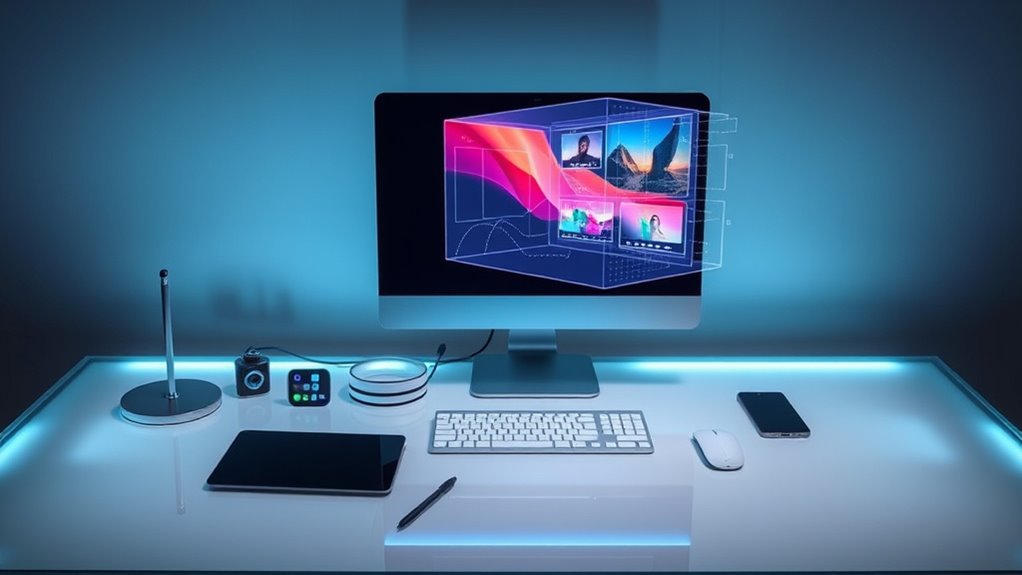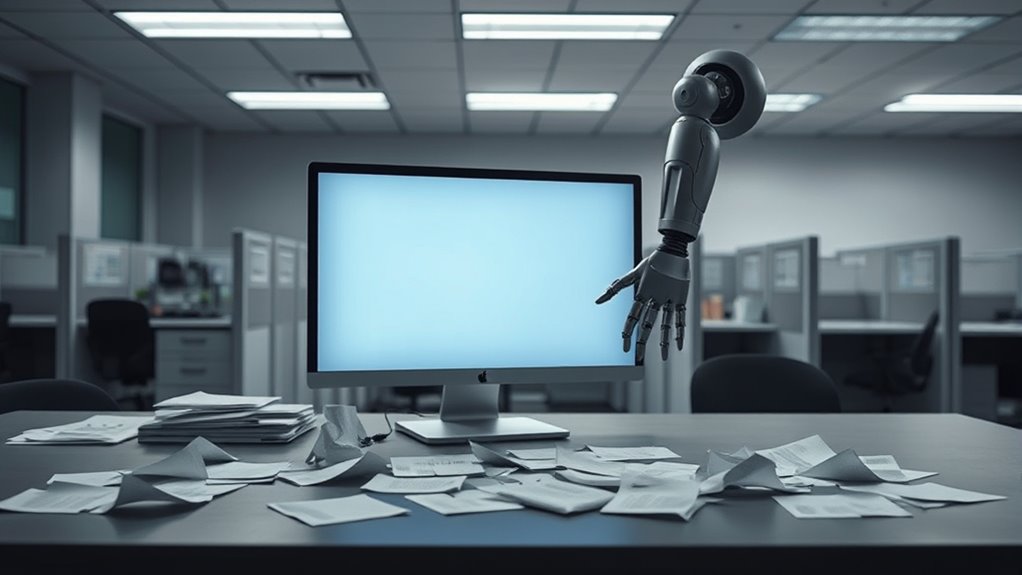Sweeping changes are hitting the job market as artificial intelligence, or AI, transforms how work gets done. Many companies are using AI tools like ChatGPT, with nearly half of U.S. businesses adopting it. What’s more, 48% of these companies say AI has already replaced some workers. In May 2023 alone, AI was linked to 3,900 job losses in the U.S. This shows AI’s growing role as a job eliminator.
Since 2000, automation has cut 1.7 million manufacturing jobs, and one in four CEOs expects generative AI to reduce jobs by 5% or more by 2024. Looking ahead, the impact could be even bigger. By 2030, AI might displace 300 million jobs worldwide. About 25% of routine tasks are already done by robots, and 23% of current jobs could change by 2027. Statista predicts 83 million jobs lost by 2027, though 69 million new ones might appear. According to Goldman Sachs, two-thirds of jobs in the US and Europe are exposed to automation.
Automation has slashed 1.7 million manufacturing jobs since 2000, with AI potentially displacing 300 million more worldwide by 2030.
Office and administrative support jobs are at high risk, with 46% likely to be automated. In 2022, 19% of American workers held jobs very exposed to AI changes. Despite job losses, AI could help in some ways. It might boost U.S. labor productivity by 0.5 to 0.9 percentage points each year through 2030. History shows new tech often cuts jobs at first but leads to growth later. Some sectors touched by AI might even add jobs by 2030. Additionally, nearly 60% of workers experience varying AI exposure levels, highlighting the widespread influence of this technology across different industries. Still, short-term job cuts are likely as companies adjust.
Certain areas feel the heat more. Administrative and production roles are most vulnerable to automation. In places like Europe and the U.S., unemployment could rise due to AI. Meanwhile, demand for high-skill workers in fields like healthcare and STEM is growing. AI is also changing what skills industries need, increasing competition and possibly lowering wages. Specific roles such as data entry clerks are among the most likely to be replaced due to repetitive tasks.
As AI spreads, it’s reshaping the future of work. By 2030, generative AI could cause 12 million occupational shifts. It’s creating new roles while replacing old ones. This shift shows how fast tech is changing the job world, bringing both challenges and chances for growth.









